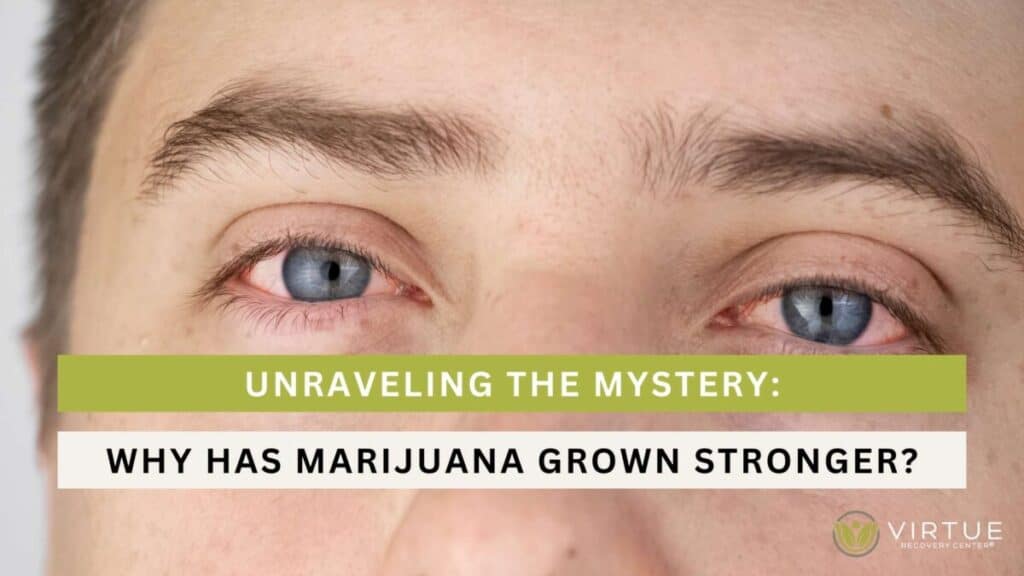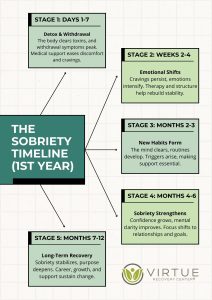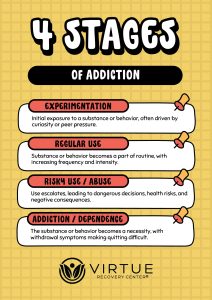In the past few years, the power of marijuana, also known as cannabis or weed, witnessed a considerable rise. However, unlike before the 1990s in which THC content in cannabis was below 2%, today’s marijuana strains contain 10% and even higher levels of THC. To further show credibility, the data from 1995 is then compared to that from 2015, and it is shown that there was a 212% increase in THC content in marijuana flower, which is a clear sign of the trend towards stronger cannabis varieties. This move in concentration parallels wider market trends, including the increase in quality cultivation technology and strain selectivity to boost certain effects, such as THC concentration. Besides THC, other elements like terpenes and cannabinoid profiles that contribute to the overall aroma and how the psychoactive experience is subtle have lately come under scrutiny as an influencer of the increased potency of marijuana.
As we move deeper into this subject matter, it matters to have a clear idea not only about the causes of the rising THC levels but also about the far-reaching consequences this trend can have on public health, including a possible connection between substance abuse and mental disorders, such as schizophrenia, depression, and psychosis.
Understanding THC and CBD
THC: The Psychoactive Component
- Discovery and Increase in Potency: Tetrahydrocannabinol (THC), discovered in the 1960s, is the main psychoactive compound that makes the user ‘high’. Since then, the THC concentrations in modern strains have remarkably increased, making them stronger. From the years between 1995 and 2015, the concentration of THC in marijuana blossoms increased up to 212%, reaching the value of 28% in the most potent strains.
- Effects on the Brain: THC activates brain regions in charge of the so-called pleasure, leading to dopamine release with resultant feelings of euphoria and peace. Nonetheless, the resulting impairment of concentration, memory problems, and elevated heart rate can also take their toll.
- Medical Uses and Risks: THC, a psychoactive compound, renders some health benefits. It may help to reduce muscle spasms, relieve pain, control nausea, and improve appetite in multiple diseases. Nevertheless, the super-potency of THC, especially in some concentrates like oils and edibles (with concentrations up to 95%), provokes a lot of questions related to increased addiction risk and other undesirable reactions.
CBD: The Non-Psychoactive Counterpart
- Source and Legal Status: CBD is derived mainly from the hemp plant, which has 0.3 % or less THC levels. Unlike THC, CBD does not cause euphoria and is legal at the federal level as well as in the U.S., yet state laws may vary.
- Health Benefits: CBD is widely recognized for its therapeutic properties, and these include managing anxiety, inflammation, and nerve-related discomforts. It operates through the slowdown of the brain signals, the reduction of the inflammatory reaction, and the change of the calcium levels in the brain cells, which may facilitate cellular communication.
- Side Effects and Usage: Although most of the time CBD is thought to be safe, it may still cause some side effects, such as nausea, diarrhea, and lightheadedness. Its efficacy and non-intoxicating properties are what make it a preferred treatment for pain-relieving without the highness effect of THC.
Comprehensive THC and CBD
- Molecular Structure: The interaction of THC and CBD is very complex. They have the same molecular formula, but their effects differ because of the atoms’ structure differences. This structural difference is the basis for the intoxicating character of THC and the non-intoxicating properties of CBD.
- Market Trends: In 1995, the ratio of THC to CBD stood at 14 to 1, and in 2014, the THC to CBD ratio was about 80 to 1, showing a market inclination towards products with a greater amount of THC. The change in cultivation methods leads to consumer experience and health implications as opposed to the higher THC levels associated with intense effects.
The difference between THC and CBD draws a vivid picture of the separate traits, uses, and bodily effects that they show, revealing how the cannabis items of the current era are being changed and the significance they have for both medical and recreational users.
Causes of Better and Better Cannabis
Breeding and Cultivation with new technologies
- Selective Breeding of Potent Strains: After many years of selection and cross-breeding, which is carried out with modern strains that are more potent, the THC level of these strains tends to be higher. For example, the seedless kind of cannabis, known as sinsemilla contains about twice times the amount of THC compared to the common seeded varieties.
- Advancements in Cultivation Methods: It is very important to note the significant role of the transition to advanced cultivation techniques, like hydroponics and indoor farming under a controlled environment. These approaches help growers to keep all the factors in the environment in order, which results in the cultivation of cannabis with more THC that is uniform.
Consequences of Legalization and Development of Products
- Development of High-Potency Products: The industry of cannabis has witnessed, after the legalization, a flood of diverse and readily available products, including THC concentrates such as oils, waxes, crystals, and others. This range of products usually has a THC content of over 90%, which appeals to consumers who are looking for strong effects at a higher level.
- Innovations in Consumption Methods: The emergence of alternative consumption methods like edibles and vapes has also played a role in the higher THC levels seen. These techniques are able to produce a higher level of THC content in the plant and have altered the means of use among consumers, compounding the increased potency of marijuana.
- Regulatory Challenges: The fast-paced change in the cannabis industry has actually surpassed the development of state regulations, it created a market where high potency products are more accessible. This picture brings about public health and safety issues, on the other hand, since higher THC levels are more probable to cause addiction and adverse effects. The most common cannabis variety contains a high level of THC and is used for recreational purposes.
- Rising THC Levels: From 1995 to 2015, the potency of marijuana flower has been on a steady rise, and in extreme cases, a lot of strains have been known to contain THC as high as 28%. This is mirroring the growing trend of consumers for high-strength marijuana.
- Increase in Concentrate Sales: Washington state happens to be one of the few states where cannabis is legal. The legalization of cannabis has led to an increase in the sales of concentrates by a huge margin. Sales of items like vape pens rocketed by an astonishing 145% in the first two years post-legalization, which is a clear indication that the market prefers high-potency products.
Through identifying these factors, stakeholders, who are made up of consumers, healthcare professionals, and regulators, can develop strategies that will help them navigate the complexities in the evolving marijuana landscape.
Implications for Public Health
High-Level THC Concentration Carries Risks
The increase in the THC potency of a marijuana plant is a matter of rising concern regarding public health. Stronger cannabis has been shown to cause severe health problems, such as a bigger chance of psychosis and more addiction. Adolescents are at a higher risk with their brain development, which can be permanently affected by conditions like schizophrenia, depression, and anxiety. In addition, the THC amount is high and can lead to physical health problems, including Cannabinoid Hyperemesis Syndrome (CHS), which is associated with severe nausea, vomiting, and dehydration.
It is evident that the relationship between public health and legalization is complex and multifaceted
The legality of marijuana in different states has become the most controversial issue nowadays. The legalization of marijuana has opened up more opportunities for its uses – both for medicinal and recreational purposes. However, it has also contributed to more cases of cannabis use disorder, especially among teens and young adults. The transition to marijuana legalization has encouraged the introduction of new public health strategies, for instance, educational programs that caution teenagers against using it and clarify the long-term health consequences of taking cannabis, especially when it has a high potency.
Observing and Tackling Health Problems
As many state health departments are more concerned about the acute effects of marijuana intoxication, such as impaired driving and cognitive deficits. We now find that the same problem of lack of monitoring of the interactions between marijuana use and other major health matters, including the opioid crisis and COVID-19 outcomes, is also emerging. The constant alterations in the legislation regarding cannabis consumption and the subsequent consequences for public health require endless research and amendable plans to prevent the negative effects associated with cannabis consumption.
Legal and Regulatory Challenges
The Differences in the federal and state attitudes towards Marijuana usage
The legal environment of cannabis in the US is expressed by the fact that federal law and state laws are significantly different from each other. Notwithstanding the federal ban on marijuana, 36 states, 4 territories, and the District of Columbia have established medical use of marijuana laws, and 17 states, two territories, and the District of Columbia have legalized it for recreational purposes as of June 1, 2021. These state-level laws are a fragmented landscape under a federal prohibition, and the regulatory environment for businesses and consumers is a complex one.
Regulatory Measures for Dosage and Consumers’ Safety
The increased power of many cannabis products over the last few years has triggered some states to introduce rules and regulations that are supposed to guarantee the safety of consumers. An instance of this is Vermont and Connecticut, with the restriction of both flower and concentrates on THC. Though most states still set sales limits based on product weight and type, which are not perfect for addressing the question of high-potency products, this is the most common approach. The absence of the necessitated federal rules on marijuana potency, unlike in countries such as Israel, Canada, and some European countries, makes the establishment of uniform safety procedures across the U.S. even more complicated.
Issues in Adopting Appropriate Policy Regarding Marijuana
The marijuana regulation debate is affected by various stakeholders, including political, public health, and business players. As another example, the Washington State Liquor and Cannabis Board is granted the power to limit THC potency but has been cautious to exercise it, indicating the intricate nature of the commitments involved in balancing industry interests and public health. The legislative push for controlling cannabis, especially the high ones, is a process with a lot of difficulties. Politicians confront great challenges to educate the community while gaining enough backing to pass an all-embracing cannabis regulation, as experts project that it might take approximately a decade to see significant legal reforms.
Looking Ahead: Cannabis Usage and Its Future
The effects on global health, international trade in pharmaceuticals, and impact on the economy
The cannabis market is set to experience a massive rise with the industry sales figures expected to reach $148.9 billion by 2031. This expansion is not just about traditional products but also covers the novel approach to the use of the products, which is a matter evolving every day. One of the most fascinating aspects of this market is the size of the U.S. market itself, which is expected to reach almost $40 billion by 2024. This development is further emphasized by the fact that cannabis has a higher tax revenue than alcohol in nine states which is a clear indicator of the growing economic significance of the cannabis market.
Trends in Consumption Methods
The demand for vaping and edibles is still increasing, showing no sign of waning, and these two methods are expected to keep their position as the popular channel of consumption in the future. This is partly because they are very private and convenient to use, thus likely attracting a variety of potential users. Moreover, the industry is at the helm of creating new ways of using marijuana, which tend to be more varied and may eventually enlarge the circle of its clientele.
Research and Development
With the growth of the market, the number of studies related to the use of cannabis constantly increases. With the most recent research garnering much information, we are increasingly on the verge of learning more about the effects and benefits of cannabis, which is, in turn, leading to more informed policies on the part of the public and the regulatory bodies. This continuous research is crucial to the process of exploring the potential enhanced efficacy and its relevance to public health and safety and, therefore, should be in line with the increasing growth of the cannabis industry.
Conclusion
As we consider the path of cannabis’s use and the rise in its potency, it is apparent that this phenomenon is an issue of both public health and regulation and offers opportunities and challenges for the cannabis industry itself. The knowledge generated from the study of the growing THC levels, the differentiation of THC as well as CBD, and the impact of the advanced cultivation techniques, one can see the complexity of the cannabis consumption of nowadays. This study has not only uncovered technical and administrative pitfalls but also emphasizes the critical necessity of a holistic knowledge gain and careful handling of cannabis use, taking into account the growing trend of legalization and commercialization.
The demand for complex reactions from healthcare providers, researchers, and policymakers now is an inevitable consequence of the rise in the potency of marijuana, which calls for an effective solution for mitigating its risks while making the most use of its possible benefits. The conversation continues and it becomes vital in situations where the users are facing problems concerning the use of cannabis to seek professional help and advice. Contact Virtue Recovery Center to initiate your or your loved one’s journey to recovery. We are available at 866-461-3339. In the future, well-conducted research, a framework of public health policies and strategies, and well-thought-out regulative rules will have to be in place to find a balance in the usage of cannabis that would benefit not only individuals but society as a whole.
FAQs
Why has marijuana become significantly stronger in recent times?
Marijuana has become stronger due to its increasing popularity, which has spurred the development of more potent products and innovative methods of consumption. Unlike the traditional methods of smoking or baking the plant, there are now numerous techniques for extracting and utilizing cannabis to maximize the extraction of psychoactive compounds and terpenes (aromatic oils).
How does the potency of modern marijuana compare to that of the past?
Modern marijuana is significantly more potent than what was available in previous generations. The THC (tetrahydrocannabinol, the primary psychoactive component) content in today’s cannabis products can be 20 percent or higher, which is a substantial increase from the typical 3 percent found two decades ago.
What is currently the most potent marijuana strain available?
The most potent marijuana strain known today is Godfather OG. It is an Indica-dominant hybrid renowned for its exceptionally high THC levels, often exceeding 30%. This strain is famous for delivering a powerful body high that helps alleviate pain and stress while inducing euphoric effects.
What is cannabinoid hyperemesis syndrome (CHS)?
Cannabinoid hyperemesis syndrome (CHS) is a condition characterized by repeated and severe bouts of vomiting, resulting from long-term marijuana use. Individuals with CHS often find some symptom relief through hot showers. Diagnosis of this condition can sometimes take several years, as many people initially manage their symptoms independently.
What is cannabis-induced psychosis and its symptoms?
Cannabis-induced psychosis refers to psychotic disorders that are attributed to cannabis use, where individuals might experience symptoms such as hallucinations, delusions, and a loss of touch with reality, often after high consumption. These symptoms can vary in severity and may require medical intervention.
What are the health risks of consuming cannabis?
The health risks of consuming cannabis can include impaired memory, altered judgment, potential dependency, respiratory issues (similar to those caused by smoking tobacco), and mental health problems such as anxiety, depression, and in some cases, psychosis.
What are the symptoms of cannabis withdrawal?
Symptoms of cannabis withdrawal can include irritability, mood swings, difficulty sleeping, decreased appetite, restlessness, cravings, and various forms of physical discomfort. These symptoms can make cessation challenging and contribute to relapse.
Can cannabis cause tinnitus?
While not commonly recognized as a direct cause, some anecdotal evidence suggests that cannabis use might exacerbate tinnitus (ringing in the ears) in some people, possibly due to changes in blood pressure and blood flow within the ear caused by THC, the psychoactive component of cannabis.
Is cannabis a gateway drug?
The concept of cannabis as a gateway drug is debated. Some studies suggest that cannabis use can precede and predict the use of more potent or hazardous substances. However, this association does not imply causation; other factors like social environment and individual susceptibility also play significant roles.
Can Stronger Marijuana Lead to Psychosis Similar to Meth?
There is ongoing research about the connection between stronger marijuana and psychosis similar to meth. Understanding meth psychosis symptoms and causes is crucial in examining potential parallels with the use of potent cannabis. Researchers are investigating the potential risks and impacts of high-potency marijuana on mental health.
References
https://www.ncbi.nlm.nih.gov/pmc/articles/PMC6312155/
https://www.publichealth.columbia.edu/news/cannabis-comeback
https://nida.nih.gov/publications/drugfacts/cannabis-marijuana
https://www.cdc.gov/marijuana/index.htm













